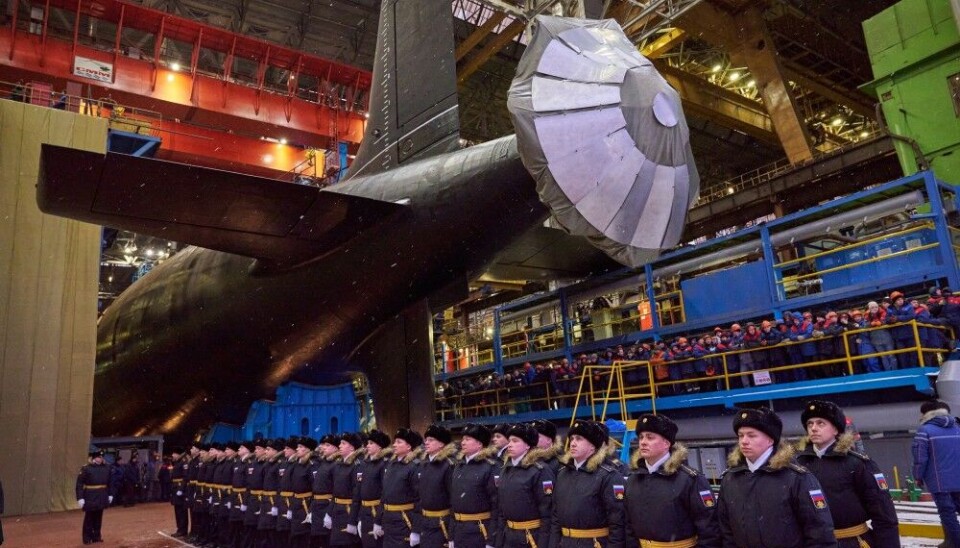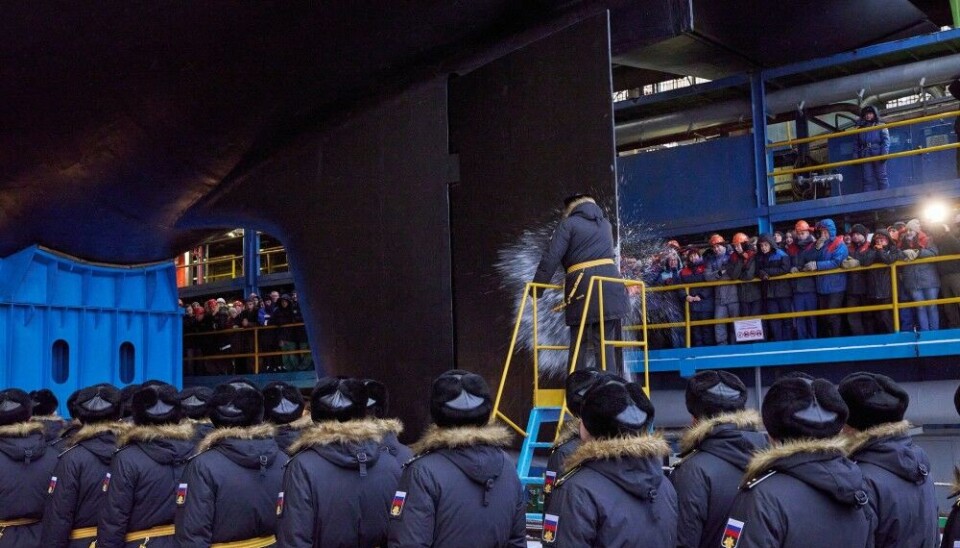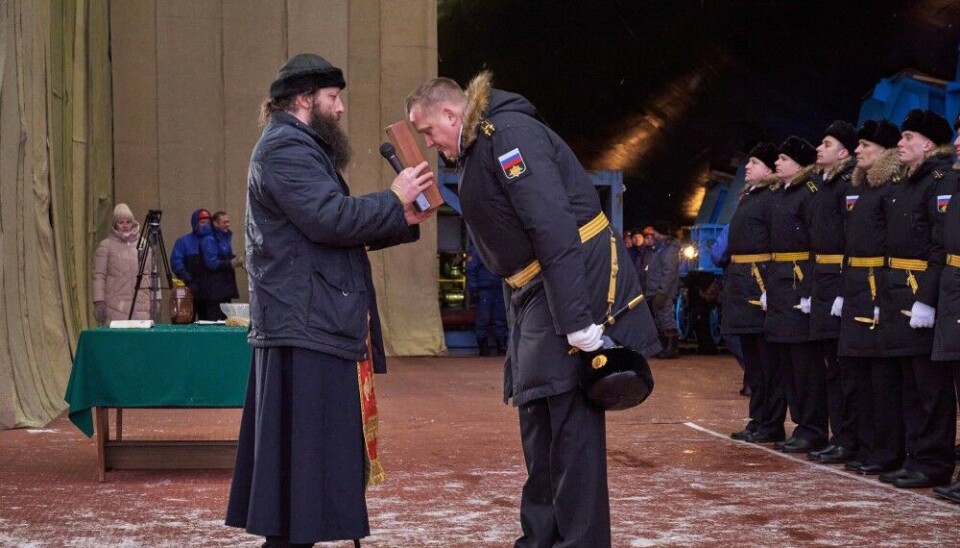
Here comes Arkhangelsk, a submarine that will boost the Northern Fleet’s hypersonic missiles capabilities
A solemn ceremony was held for the K-564 Yasen-M class multi-purpose submarine at the Sevmash shipyard in the north Russian city of Severodvinsk on November 29.
The Arkhangelsk was rolled out of the construction hall into a launch dock in a ceremony attended by Russian Navy Commander, Admiral Nikolai Yevmenov. A bottle of champagne was smashed on the hull by the submarine’s commander, Captain Aleksandr Gladkov.
Launching new submarines near the end of the year follows a long tradition back to Soviet days, as fulfilling annual plans ranks higher than assuring quality checks.
K-564 will now be floated out on the water and state tests can start. Navigation, diving and communication systems are to be examined. So are the launching tubes for torpedos and cruise missiles on board the highly potent submarine.
“The weapons systems of these vessels are significantly superior to their foreign counterparts in a number of their characteristics,” Admiral Yevmenov stated in his speech.
The Yasen-M class can carry Kalibr cruise missiles, but more important for the navy is arming these new submarines with the Tsirkon hypersonic cruise missiles, a weapon key for Russia in the ongoing naval arms race with NATO.
Head of the United Ship-Building Corporation, Aleksei Rakhmanov, in August told state-controlled news agency RIA Novosti that the Yasen-M class subs will be armed with the Tsirkon missiles.
“Work in this direction is already underway,” Rakhmanov said.
A Tsirkon was first time tested from the Yasen-class submarine Severodvinsk in October 2021, from a submerged position at a depth of 40 meters.
The scramjet maneuvering wing anti-ship cruise missile is said to be capable of accelerating up to Mach 9 (nine times the speed of sound) and has a range of up to 1,000 kilometers. That means a launch from inside Russia’s bastion defense area in the Barents Sea can reach enemy warships practically anywhere in the part of the Norwegian Sea north of the Arctic Circle.

The Tsirkon missile is already deployed on the Northern Fleet’s new frigate of the Gorskhov class frequently sailing the Barents Sea and North Atlantic outside the Scandinavian Peninsula.
Sailing undetected, the Yasen-M class submarines are likely capable of posing a serious threat to military bases, naval convoys, and onshore critical infrastructure during an escalating crisis.
K-564 Arkhangelsk will be based at the Nerpitcha piers at the submarine base in Zapadnaya Litsa, a short 60 kilometers from the border to NATO country Norway. Two other Yasen-class vessels, Severodvinsk and Kazan are already sailing out from the same base.

Last week, the Barents Observer reported about Russia’s decision to add three more Yasen-M class submarines to its construction plans, bringing the total fleet up to 12 vessels. Six will sail with the Northern Fleet and six will be based with the Pacific Fleet.
The State Duma, the lower house of Russia’s parliament, on Friday approved the 2024 budget with a strong emphasis on the country’s war economy.
Overall spending is expected to reach 37 trillion rubles (about €380 billion) an increase of around 25% from 2023. Almost a third of this, 10,8 trillion rubles is earmarked for defense- and security structures. The increase year-by-year is 68% and 2023 already had a doubling compared with the year before the full-scale invasion of Ukraine.
Russia has never spent a higher share of its economy on the military since the breakup of the Soviet Union.
The Barents Observer has previously reported that construction at Sevmash yard on the shores of the White Sea has reached a post-Soviet peak.















